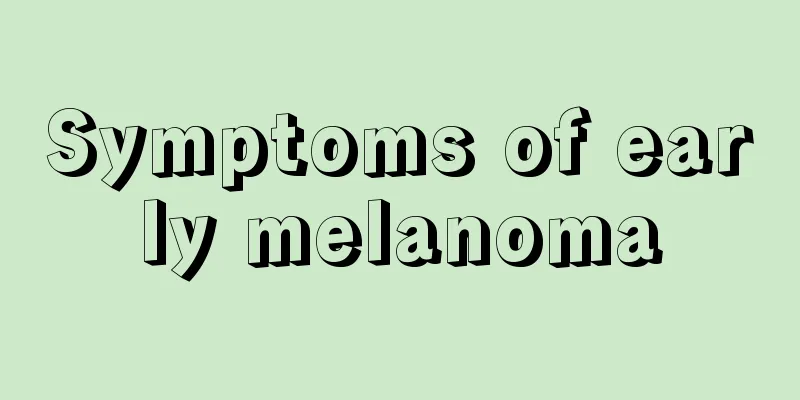Treatment of hypothalamic hamartoma

|
Hypothalamic hamartoma (HH), also known as gray tubercle hamartoma and hypothalamic neuronal hamartoma, is a clinically extremely rare congenital abnormal development of brain tissue. In fact, hypothalamic hamartoma is an ectopic neural tissue that occurs in the lower part of the hypothalamus or gray tubercle area, not a true tumor. The incidence rate in the population is about 1/5 to 100,000, with slightly more females than males. It mainly occurs in infants and children, with an average age of onset of 22 months. The main manifestations are precocious puberty, gelastic epilepsy, and some cases may be accompanied by other types of epilepsy or abnormal behavior. Specific epilepsy: Gelastic epilepsy is the most characteristic clinical symptom of hypothalamic hamartoma. Gelastic epilepsy is a type of diencephalic epilepsy, which manifests as paroxysmal giggling, which lasts for several seconds or tens of seconds and suddenly stops. There is no loss of consciousness during the attack, and it may occur dozens of times a day. Gelastic laughter often begins in infants and young children, and the attacks become more frequent with age. However, gelastic epilepsy can only be diagnosed if it meets the following conditions: no external triggers, repetitive and stereotyped laughter, may be accompanied by other types of epilepsy, and EEG changes. Gelastic epilepsy is not well treated with drugs, and long-term attacks can lead to cognitive and behavioral disorders, and then develop into complex partial epilepsy, tonic epilepsy, tonic-clonic epilepsy and secondary generalized epilepsy. Girls show menarche and breast development, pubic hair growth, and plump and pigmented vulva; boys show puberty characteristics such as thick penis, acne, beard, coarse voice, and developed muscles. Children with precocious puberty have increased levels of LH, FSH, and estrogen or androgen, and enter puberty prematurely. Due to rapid bone development, they show early signs of overgrowth, but also stop developing early, losing their potential for height development and becoming short. Precocious puberty may be related to the existence of independent endocrine functional units in hamartomas. Specific epilepsy: Gelastic epilepsy is the most characteristic clinical symptom of hypothalamic hamartoma. Gelastic epilepsy is a type of diencephalic epilepsy, which manifests as paroxysmal giggling, which lasts for several seconds or tens of seconds and suddenly stops. There is no loss of consciousness during the attack, and it may occur dozens of times a day. Gelastic laughter often begins in infants and young children, and the attacks become more frequent with age. However, gelastic epilepsy can only be diagnosed if it meets the following conditions: no external triggers, repetitive and stereotyped laughter, may be accompanied by other types of epilepsy, and EEG changes. Gelastic epilepsy is not well treated with drugs, and long-term attacks can lead to cognitive and behavioral disorders, and then develop into complex partial epilepsy, tonic epilepsy, tonic-clonic epilepsy and secondary generalized epilepsy. Girls show menarche and breast development, pubic hair growth, and plump and pigmented vulva; boys show puberty characteristics such as thick penis, acne, beard, coarse voice, and developed muscles. Children with precocious puberty have increased levels of LH, FSH, and estrogen or androgen, and enter puberty prematurely. Due to rapid bone development, they show early signs of overgrowth, but also stop developing early, losing their potential for height development and becoming short. Precocious puberty may be related to the existence of independent endocrine functional units in hamartomas. Surgical treatment is available for patients who are ineffective with drug treatment for precocious puberty; or patients who are effective but develop neurological symptoms such as ataxia and epileptic seizures during medication; or patients who are unable to afford the cost of drug treatment; patients who are ineffective with gelastic epilepsy and other types of epilepsy; and patients with neurological dysfunction caused by the mass effect of the tumor. The surgical procedures available are: pterional approach, transcallosal interforniceal approach, and neuroendoscopy. With the development of imaging and the improvement of microsurgical techniques, the complete resection rate of hypothalamic hamartomas has increased significantly, and good results have been achieved. After the complete resection of the hamartoma, the symptoms of precocious puberty stop and hormone levels return to normal. In some children, epileptic seizures completely stop or the number of seizures is significantly reduced. |
<<: Symptoms of brain cancer in women
>>: How to prevent bladder cancer
Recommend
How to prevent early colorectal cancer metastasis
After treatment, cancer patients who have recover...
What are the signals of glioma onset?
There is no specific cause for glioma. Various st...
Two chemotherapy regimens for Hodgkin's lymphoma
The treatment strategy for Hodgkin's lymphoma...
Is acupuncture or cupping better for weight loss
Acupuncture and cupping are both common TCM weigh...
Acupuncture points around the eyes
The acupoints around the eyes generally include Q...
The best treatment for glioma
When we hear the word tumor, we may feel that we ...
How to preserve facial mask in summer
Many times, because of the low price, people ofte...
How long can a benign stomach cancer patient live
Gastric cancer indicates that the cancer cells in...
What are the medicinal values of Chlorophytum?
We like to put spider plants in the office or in ...
Why does my left chest hurt when I breathe?
For friends who feel pain in the left chest when ...
Kidney cancer staging and grading
Kidney cancer staging: Kidney cancer is a maligna...
What disease can cause muscle twitching
The phenomenon of muscle twitching is generally d...
What are the reasons why the refrigerator compartment is not cold?
The refrigerator must be a device that everyone i...
How much harm does chemotherapy do to the human body
It is a method of treating cancer in the medical ...
What aspects does anti-infection treatment for lung cancer include? What are the common treatments for lung cancer?
What does anti-infection treatment for lung cance...









